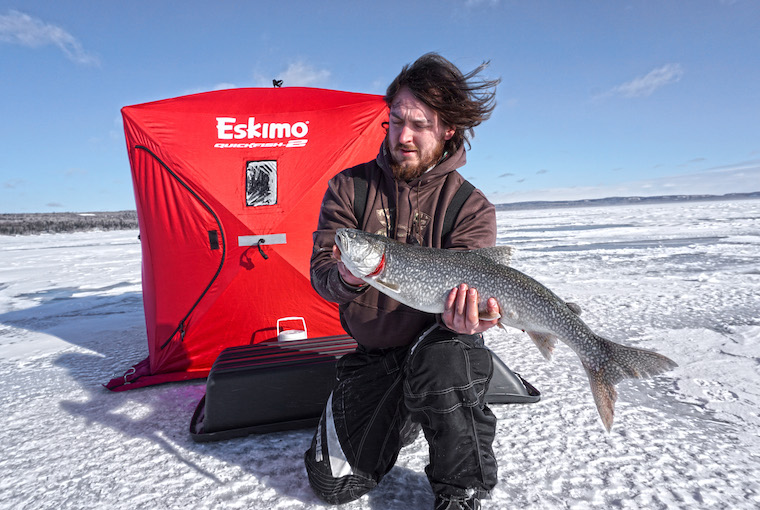
The lake trout — sometimes called grey trout — is a species designed by Mother Nature for winter. The colder, snappier, and brighter the winter day, the more those grey trout like it. They usually strike a jigged line with ferocity, and when hooked through the ice, rarely fight with anything less than full commitment. The laker, however, can also be a fickle character. Here are some of my thoughts and reflections on catching the perfect winter fish.
Cold and bright is right
It’s not that you can’t catch lake trout when it is mild and cloudy. You can. However, if I were to choose the perfect day to chase lakers on ice, it would be a crisp and sunny day in January, February, or March. The high pressure associated with cold days is a trigger for lake trout.
Last February, I decided to go laker fishing on Lake Superior just east of Thunder Bay. Conditions were harsh — some might say brutal — and for some odd reason, no one wanted to go with me. My snow machine protested the -25 ̊C air. When it sputtered to life, I hooked on my fish trap sled and made a short run onto the ice. I drilled two holes, flipped the tent over my head and turned on the heat.
I clipped on a silver and red Williams Whitefish jigging spoon and let it slowly flutter. My Humminbird flasher showed the spoon as it descended 85 feet to bottom. Most lakers hug the bottom, although they will chase a lure well up. The spoon touched bottom, and I closed the bail. Lifting the rod tip up and then dropping it slowly allowed the spoon to flutter and dance. That spoon danced about a dozen times when a large mark suddenly appeared on my flasher screen. The line tightened on the upstroke and a lake trout was on. I’ve done a lot of ice fishing in my day, but there are few feelings as satisfying as the thump of a big laker. It never gets old. The fish made a couple runs and fought doggedly all the way to the top. At the hole, I reached down and grabbed the fish by the gill plate. It was a perfect specimen, about seven pounds, with that grey and cream mottling that is so distinctive. That trout was the first of eight I would land in just a few hours. The lakers were on a tear that day as the cold winds of February rattled the tent. The bottom line is this: don’t avoid the cold, bright days if you like lakers.
Mix it up
Lake trout are an aggressive fish, so my preference is to use techniques that trigger strikes. The go-to technique involves a spoon jigged on 20-pound test braided line with a 15-pound monofilament or fluorocarbon leader. There are many great lake trout jigging spoons, but the Williams Jigging spoon, Williams Bully, EGB Killer Copper, Lucky Strike Algonquin Wobbler, Swedish Pimple, Gibbs Kroc, Hopkins Smoothie, and Buzz Bomb are some of the classics. Have a few different sizes of spoon from 1⁄4 ounce to one ounce or more. In big water, a larger, heavier spoon can call fish in very effectively.
Plan B
When lakers are coming into a spoon but not striking, switching to a more subtle presentation is the key to getting bit. The classic winter lake trout plastic is a four-inch white or pearl tube with a half-ounce head. The slow spiral of a tube to the bottom is usually more than a fickle lake trout can endure. Classic tubes like the ones used for smallmouth fishing will do the job. I’ve also had good success with the specialty lake trout tubes called Hunger Strike, made by Drop Tine tackle in northwestern Ontario (droptinetackle.com). They are pre-rigged with a treble and main single hook and have the added appeal of a small spinner blade teaser. Hunger Strike tubes come in a wide variety of sizes and colours. Minnow and vibro-tail bodies are also options that can be fished on swimbait heads. I will often reel the plastic away from a trout that is being fickle and make it chase. It is amazing how often that fleeing lure triggers a strike. If the fish stops chasing, let the tube free fall. Sometimes that is enough to change the channel.
Electronics key
Having good electronics when fishing lakers is a game changer. An old-school flasher will work and gives you all the basic information you need. However, the new breed of ice sonars include GPS mapping and a variety of zooms and display choices. Being able to see when a lake trout is approaching and how it is reacting to your presentation, can be the difference between catching fish or getting skunked. If you don’t like technology and just want to drop a spoon to the bottom and jig, that will work too. The lakers don’t know you are old school.
There are many shades to grey trout.
Originally published in the Jan.-Feb. 2023 issue of Ontario OUT of DOORS Magazine


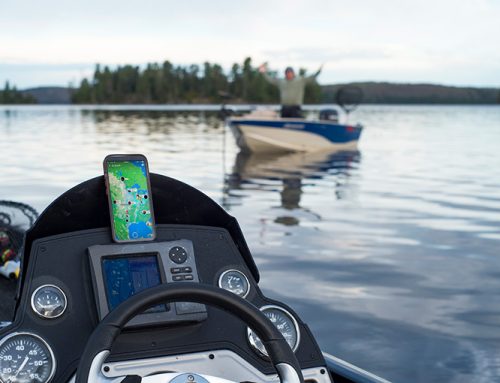
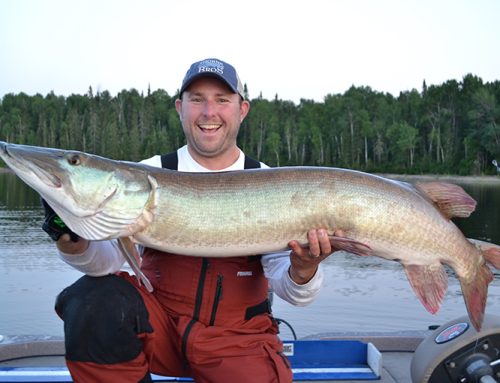
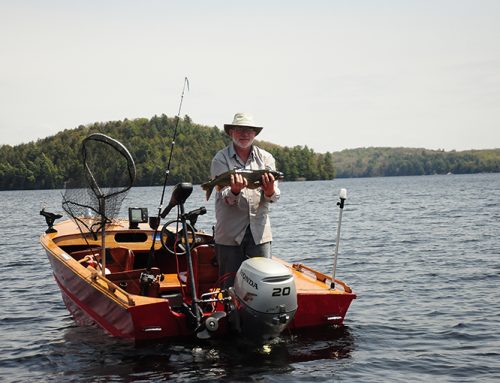
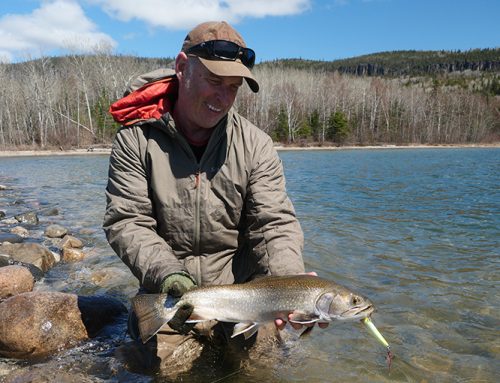
Leave A Comment